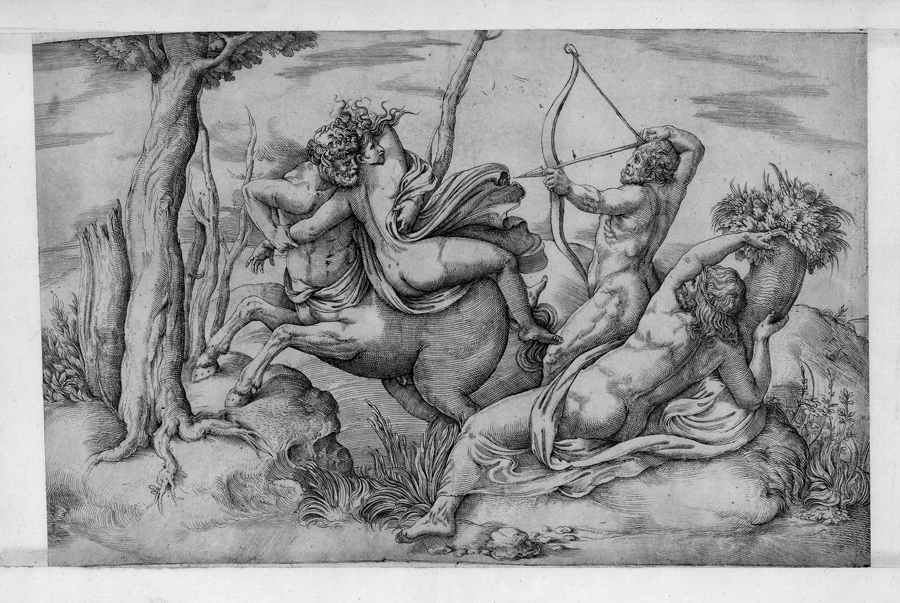Loading the page ...
Giovanni Battista Franco
(called il Semolei, ca. 1510–1561, Venice)
The Rape of Deianira. Etching and engraving. 24.6 x 38.5 cm. Bartsch XVI, 132, 40 I (of II).
The composition is probably derived from a Roman relief and testifies to the artist’s lifelong preoccupation with ancient art. According to Vasari, Franco was twenty when he went to Rome to study antique sculpture, and the frequent occasions when he was inspired to draw upon classical forms in his extensive œuvre document the intensity and energy with which he pursued this undertaking.
Franco’s printed œuvre is stylistically very varied, ranging from works, executed in the controlled and disciplined engraving technique of the Raimondi School, to prints treated with a lighter touch, in which the artist often employs the more spontaneous and expressive medium of etching. This freedom of treatment matches the fluid and nimble linework of his drawings. In the present sheet both techniques are skilfully combined. The basic elements of the composition are first sketched with the etching needle. The burin is then used to add details of bodies, clothing and vegetation, bringing out their linear structure and three-dimensionality. Details of the terrain and vegetation are treated as pure etching, while the lightness and transparency of the hatching reinforce the dynamic impact of the scene. Deianira, who is being abducted by the centaur Nessus, looks as though she has been caught up in a whirlwind and turns away from her ravisher in horror. Hercules aims his bow to punish the forest denizen for his evil deed. In the face of all this violence the river god in the foreground seems almost to recoil fearfully.
A superb, tonal early impression, trimmed to the platemark, with thread margins around the platemark at the top and below. The original window mounting, for which a blank sheet of paper was used and cut into four strips, enhances the rarity of this precious print. The paper bears the contemporary watermark "Mermaid in circle with six-pointed star" (cf. Woodward 91, Venice, from 1557).
Minimally stained, minor aging, otherwise in excellent condition.
